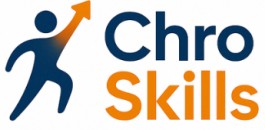
Understanding the Role of a Chief Human Resources Officer
Understanding the Multifaceted Role in Human Resources Leadership
The position of a Chief Human Resources Officer (CHRO) is pivotal in aligning human resources strategy with the overarching business goals, and this involves an intricate balance of leadership, strategic acumen, and adaptability. As organizations today face the need to innovate continuously, the CHRO role evolves from traditional HR responsibilities to becoming a driver of agile learning methodologies and strategic planning. A CHRO needs to be deeply involved in the design of learning strategies that foster growth and efficiency, particularly in a swiftly changing business landscape. The nature of instructional design is crucial here, where a dynamic approach can lead to more effective learning experiences for employees. This means understanding how agile methodologies can integrate into the learning development framework, facilitating rapid learning and ongoing professional development. The adaptation of agile in instructional design models highlights a significant paradigm shift. Agile learning focuses on iterative progress, quick feedback loops, and a learner-centric approach. Among widely adopted models like SAM (Successive Approximation Model), this approach allows instructional designers to iterate rapidly, involving teams in a collaborative process that emphasizes continuous improvement. CHROs must also be adept in project management and embracing agile methodologies to enhance the learning design process. Whether overseeing the creation of eLearning content, facilitating course development, or managing instructional designers, their leadership is crucial in cultivating environments where learning can thrive. Furthermore, chief human resources officers should not only focus on present success but also facilitate agility in future initiatives. By leveraging agile instructional design and development processes, they can create robust frameworks that support long-term business objectives and learner outcomes. For those seeking to strengthen their leadership in HR, methods such as project shadowing can be incredibly beneficial in gaining firsthand insights and more effectively aligning with organizational goals. More information can be found on enhancing leadership through project shadowing in HR contexts here.Essential Skills for a CHRO
Critical Characteristics and Capabilities of a CHRO
In the ever-evolving world of business, the role of a Chief Human Resources Officer (CHRO) requires a unique blend of skills and abilities that go beyond traditional HR functions. As companies shift towards more agile practices in their design and processes, it's essential for a CHRO to adapt and lead the organization through these transformations. One fundamental skill for a CHRO is effective project management. This involves overseeing various initiatives and aligning them with the organization's overall goals. The ability to seamlessly integrate agile methodologies into HR processes can aid in creating more adaptable and responsive learning and development strategies. Moreover, understanding instructional design models, such as the SAM model, becomes crucial. A CHRO must collaborate with instructional designers to develop rapid learning solutions that cater to the shifting needs of today's learners. This partnership in course design enhances content development, ultimately contributing to more engaging learning experiences. Another key area for a CHRO is the development and deployment of feedback mechanisms. In an agile learning environment, continuous feedback is vital for adjusting training programs and adapting to new insights. By fostering a culture that values feedback, CHROs can support teams in refining their learning design, ensuring that training content remains relevant and impactful. Furthermore, an agile approach to HR demands prowess in fostering agile instructional practices that empower teams to experiment and iterate quickly. By embracing an agile mindset, CHROs help create a culture of continuous improvement where instructional designers and content developers feel equipped to innovate and adapt. Finally, CHROs need to possess excellent communication skills to effectively convey the strategic vision of agile HR and learning development processes to all stakeholders. By doing so, they ensure everyone is aligned and moving towards common organizational objectives. To further explore the nuances of CHRO skills, including task analysis and other leadership essentials, interested readers can delve into in-depth resources such as enhancing task analysis in HR leadership. This knowledge equips aspiring HR leaders to effectively integrate agile methodologies into their leadership approach.The Importance of Agile Methodologies in HR
Adopting an Agile Foundation in HR Practices
The concept of agility is progressively reshaping how human resources dynamics unfold within businesses. Agile methodologies are now fundamental in ensuring HR functions adapt promptly and efficiently to evolving organizational demands. Recognizing the significance of agile practices is crucial for a Chief Human Resources Officer aiming to steer the HR department toward future-ready directions.In essence, integrating agile methodologies into HR involves reimagining traditional processes and embracing a mindset that values flexibility, collaboration, and continual improvement. This shift not only enhances the efficiency of HR operations but also fosters a more dynamic and responsive organizational culture. Here’s how adaptability can revamp HR:
- Iterative Design Models: Adopting agile principles in HR mirrors the successful application in instructional design. By utilizing iterative design models like the SAM (Successive Approximation Model), HR teams can develop and refine processes involving recruitment, training, and employee engagement continually. This iterative approach allows for adapting to feedback quickly, ensuring HR practices remain aligned with business objectives and employee needs.
- Enhanced Learning Experiences: Agile frameworks emphasize the need for responsive learning pathways, reflective of modern instructional design principles. By incorporating agile learning into HR strategies, organizations can create tailored training programs that evolve with the organization's growth. Agile learning and elearning initiatives ensure that individual learning journeys are as dynamic and individualized as possible.
- Effective Feedback Mechanisms: Just as agile instructional designers prioritize feedback at every stage of the design process, HR teams can benefit from similar practices. Incorporating regular feedback loops into HR operations can drive improvements in workplace satisfaction and productivity. Feedback-driven HR systems enhance the development process for learners, fostering a proactive and engaging organizational atmosphere.
- Cross-functional Collaboration: Agile methodologies encourage collaborative efforts across departments to achieve cohesive and comprehensive solutions. This approach benefits HR by facilitating cross-functional teams that bring diverse insights to the table, enhancing the overall effectiveness of HR initiatives.
In conclusion, the agile approach is an evolutionary path that augments the HR department’s capability to meet dynamic business challenges. By fostering a culture that values rapid learning, feedback, and cross-functional collaboration, HR leaders can transform organizational learning experiences and drive sustainable growth.
Integrating Agile into Instructional Design Models
Blending Agile with Instructional Design
Integrating agile methodologies into instructional design models can significantly enhance the learning and development process. The agile approach, known for its flexibility and iterative nature, aligns well with the dynamic needs of instructional design. By adopting agile learning principles, instructional designers can create more responsive and effective learning experiences.
Agile Principles in Learning Design
Agile methodologies emphasize collaboration, rapid feedback, and iterative development. These principles can be seamlessly integrated into the instructional design process to foster a more adaptive learning environment. For instance, the agile approach allows for continuous feedback from learners, enabling instructional designers to refine and improve content in real-time.
Implementing Agile Models
One popular model that embodies agile principles is the Successive Approximation Model (SAM). This model encourages iterative cycles of design and development, allowing for ongoing adjustments based on learner feedback. By incorporating SAM, instructional teams can ensure that the learning content remains relevant and effective throughout the project lifecycle.
Benefits of Agile in Content Development
- Flexibility: Agile methodologies allow for adjustments to be made quickly in response to changing business needs or learner feedback.
- Collaboration: Agile promotes teamwork and communication among instructional designers, subject matter experts, and learners.
- Efficiency: The iterative nature of agile can lead to faster development cycles, reducing time-to-market for training programs.
- Quality: Continuous feedback loops ensure that the learning content is continually refined and improved.
Challenges and Considerations
While the benefits of integrating agile into instructional design are clear, there are challenges to consider. Teams must be prepared to embrace a cultural shift towards more collaborative and iterative work processes. Additionally, project management practices may need to be adjusted to accommodate the agile approach.
In conclusion, the integration of agile methodologies into instructional design models offers a promising avenue for enhancing learning and development initiatives. By fostering a more responsive and collaborative environment, organizations can create impactful learning experiences that meet the evolving needs of their learners.
Case Studies: Successful Agile Implementation in HR
Real-World Examples of Agile in HR
In the dynamic world of human resources, the integration of agile methodologies has proven to be transformative. Organizations that have embraced agile approaches in their HR functions often witness significant improvements in efficiency and adaptability. Here, we explore some real-world examples where agile has been successfully implemented in HR, offering insights into its practical applications.
Transforming Training Programs with Agile
One notable example is the adoption of agile learning in training and development programs. Companies have shifted from traditional, rigid training modules to more flexible, iterative learning experiences. This shift allows instructional designers to rapidly develop and refine content based on continuous feedback from learners. By utilizing agile principles, such as those found in the SAM model, organizations can create more engaging and effective training courses that meet the evolving needs of their workforce.
Agile Project Management in HR Initiatives
Another area where agile has made a significant impact is in project management within HR. Teams have started applying agile project management techniques to streamline HR processes, from recruitment to performance management. This approach enables HR teams to respond quickly to changes and prioritize tasks that deliver the most value to the business. By breaking down projects into smaller, manageable tasks, HR departments can ensure timely delivery and better alignment with organizational goals.
Enhancing Employee Engagement through Agile Feedback Loops
Agile methodologies have also been instrumental in enhancing employee engagement. By implementing regular feedback loops, HR teams can gather insights from employees more frequently and make data-driven decisions to improve the workplace environment. This continuous feedback process not only boosts morale but also fosters a culture of transparency and collaboration, ultimately leading to higher employee satisfaction and retention.
Agile Learning Design for Continuous Improvement
Incorporating agile into learning design processes allows organizations to continuously improve their instructional models. By adopting an iterative approach, instructional designers can test and refine learning content in real-time, ensuring that it remains relevant and impactful. This agile approach to learning development not only enhances the quality of educational materials but also aligns them more closely with the strategic objectives of the business.
These case studies highlight the transformative potential of agile methodologies in HR. By embracing agility, organizations can not only improve their HR functions but also drive overall business success.
Future Trends in HR and Instructional Design
Emerging Trends in HR and Instructional Design
The landscape of human resources and instructional design is rapidly evolving, driven by technological advancements and changing workforce dynamics. As organizations strive to remain competitive, understanding future trends becomes crucial for Chief Human Resources Officers (CHROs) and instructional designers alike.
Technology-Driven Learning Experiences
One of the most significant trends is the integration of technology in learning and development processes. The use of artificial intelligence and machine learning is transforming how training programs are designed and delivered. These technologies enable personalized learning experiences, adapting content to meet individual learner needs and preferences. This shift not only enhances engagement but also improves the effectiveness of training initiatives.
Agile Methodologies in HR and Learning Design
Agile methodologies, initially popularized in software development, are increasingly being adopted in HR and instructional design. This approach emphasizes flexibility, collaboration, and rapid feedback, allowing teams to adapt quickly to changing business needs. The agile approach is particularly beneficial in project management, where iterative processes can lead to more efficient and effective outcomes.
Focus on Continuous Learning and Development
As the pace of change accelerates, continuous learning and development have become essential. Organizations are moving away from traditional, one-time training sessions to ongoing learning opportunities. This shift requires a more dynamic design model that supports lifelong learning and development, ensuring that employees remain equipped with the skills needed to thrive in a rapidly changing environment.
Collaborative Learning Environments
Another emerging trend is the emphasis on collaborative learning environments. These environments foster teamwork and knowledge sharing, encouraging learners to engage with content and each other. By leveraging social learning platforms and tools, organizations can create a more interactive and engaging learning experience, which can lead to better retention and application of knowledge.
Data-Driven Decision Making
Data analytics is playing an increasingly important role in HR and instructional design. By analyzing data from various sources, organizations can gain insights into learner behavior, training effectiveness, and overall business impact. This data-driven approach enables more informed decision-making, allowing CHROs and instructional designers to tailor their strategies to meet specific organizational goals.
In conclusion, staying ahead of these trends requires a commitment to innovation and a willingness to embrace new methodologies. By integrating technology, adopting agile practices, and fostering a culture of continuous learning, organizations can create more effective and engaging learning experiences that drive business success.













